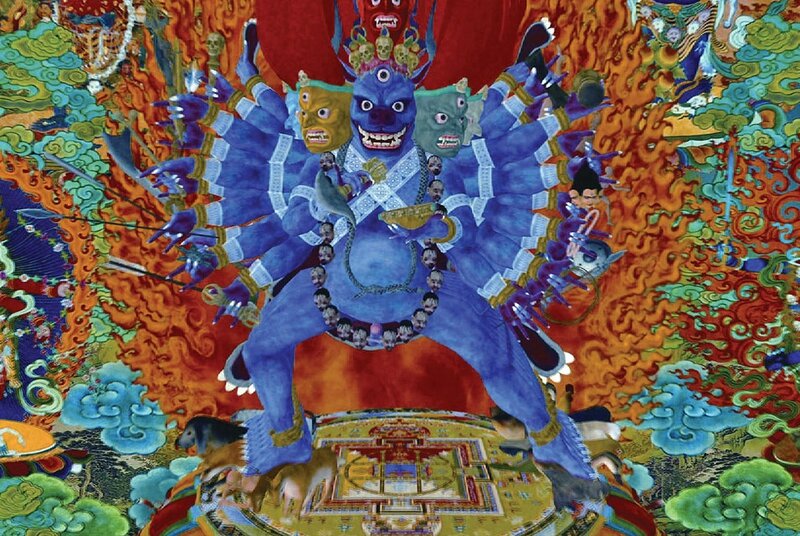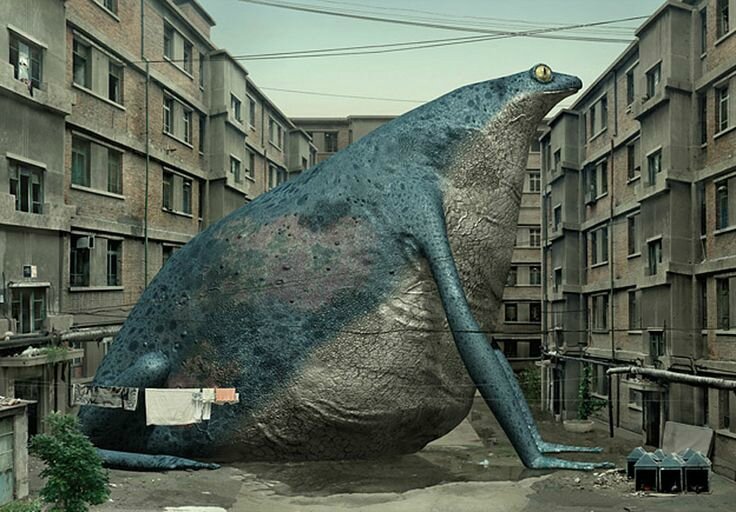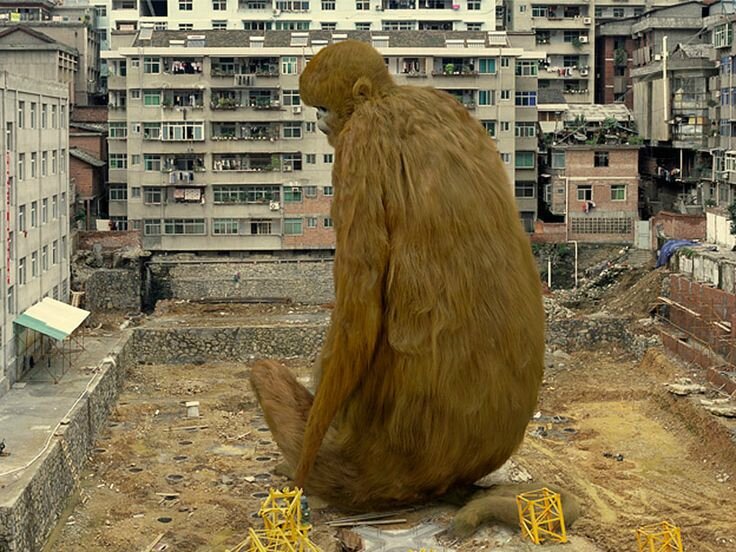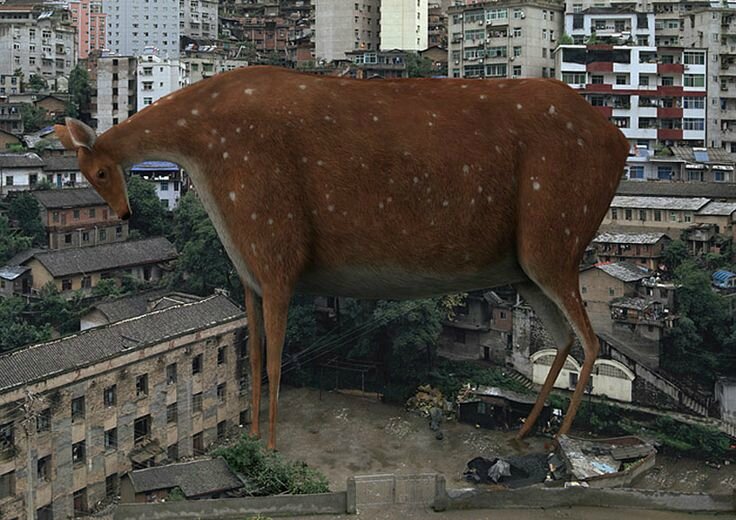Museum of Fine Arts, St. Petersburg to spotlight the innovative work of emerging Chinese artists
Lu Yang (Chinese, born 1984), Wrathful King Kong Core (2011). HD video, color. Courtesy of Beijing Commune
ST. PETERSBURG, FLA.- My Generation: Young Chinese Artists is one of the most compelling exhibitions of contemporary art ever presented at the MFA. It looks at the new generation of artists who have emerged in mainland China since 2000, a period marked by increased openness to the West and greater experimentation. The Chinese art scene has exploded with more than 400 galleries and 700 new museums opening in the last four years alone.
Installations, video, photographs, paintings, drawings, and mixed-media works by 27 artists will be on view from Saturday, June 7, through Sunday, September 28. The curator, New York-based art critic Barbara Pollack, interviewed more than 100 young artists from every region of China in preparing the exhibition. The works will be divided between the MFA and the Tampa Museum of Art, creating a cultural corridor across the bay.
“My Generation brings a brilliant group of young artists to Tampa Bay for the first time,” said MFA Director Kent Lydecker. “Their astonishing work shows us that Chinese art is at the very cutting edge of creativity.”
All the artists represented were born after 1976, the year Mao died, and the end of the Cultural Revolution, which began in 1966. Almost all are products of the One-Child Policy and have grown up in a country with a high-powered market economy. Some of the artists, while also working individually, have formed partnerships and collectives.
Ms. Pollack has divided My Generation into four overriding themes: politics, the environment, intimate relationships, and family. The MFA will display works that explore the first two concepts.
Liu Di is one of the youngest artists with work in the show and created his Animal Regulation series in 2010 when he was just 23. Using Photoshop, he places enormous animals in the midst of Beijing construction sites and projects, conveying a sense of desolation and absurdity. In his video Flying Blue Flag (2004-2005), Hu Xiangqian plays a candidate for mayor in his hometown, even buying votes, in what is ultimately an impossible race. Shi Zhiying’s stunning paintings combine Eastern and Western influences and display her spiritual journey, influenced by Buddhism. Lu Yang pushes the boundaries of technology, combining 3-D animation, medical illustrations, and techno music. Sun Xun has devised a new installation especially for the MFA. Primarily using animation and drawing, he conjures up fantastical nations and worlds.
Political activism and censorship remain complicated in China. Unlike the previous generation who developed during the Cultural Revolution and lived through Tiananmen Square, younger artists tend to be more subtle in their work, avoiding direct opposition to the government. Ms. Pollack points out in the catalogue that “sexuality and depictions of nudity are forbidden according to censorship regulations, but galleries have easily circumvented these rules. Museums are more strictly controlled.” Artists are examining gender issues and gay identity, but they face intense family pressure to marry and have children. Gays and lesbians are only beginning to step out of the closet and young women artists are reluctant to call themselves “feminists.”
Ms. Pollack writes “that China, going back to the Silk Road, has always been the site of cross-cultural influences, both appropriating and disseminating imagery and techniques to enrich its own aesthetic development. As such, the influx of everything from McDonald’s to Warhol, instantly synthesized by Chinese artists, is as genuinely Chinese as any Imperial ceramic or scroll painting.”
In fact, many of these young artists have studied traditional Chinese art forms in the demanding academies they have attended and have reacted to them in their work. The MFA’s significant collection of Asian art, including Chinese ceramics, a magnificent Han Dynasty-horse, and Tibetan bronze Buddhas, encourages visitors to place this new work in a longer stream of history and culture.
The striking catalogue will feature insightful essays by Ms. Pollack and multimedia artist and curator Li Zhenhua, based in Shanghai and Zurich; a foreword by Tampa Museum of Art Executive Director Todd D. Smith and MFA Director Kent Lydecker; reproductions of all the works in the show; and artist biographies. Katherine Pill, Assistant Curator of Art after 1950, is coordinating the project at the MFA. My Generation will travel to the Oklahoma City Museum of Art later this year. A free application about the exhibition for iPhone, iPad, and other devices will be available.
Di Liu, animal regulation no. 4, 2010. C-print, 80 x 60 cm. edition of 10. © Di Liu / pekin fine arts
NDB: Others Di Liu: animal regulation series:
Di Liu, animal regulation no. 2, 2010. C-print, 80 x 60 cm. edition of 10. © Di Liu / pekin fine arts
Di Liu, animal regulation no. 5, 2010. C-print, 80 x 60 cm. edition of 10. © Di Liu / pekin fine arts
Di Liu, animal regulation no. 6, 2010. C-print, 80 x 60 cm. edition of 10. © Di Liu / pekin fine arts
Di Liu, animal regulation no. 7, 2010. C-print, 80 x 60 cm. edition of 10. © Di Liu / pekin fine arts
Di Liu, animal regulation no. 8, 2010. C-print, 80 x 60 cm. edition of 10. © Di Liu / pekin fine arts

/https%3A%2F%2Fprofilepics.canalblog.com%2Fprofilepics%2F1%2F0%2F100183.jpg)
/https%3A%2F%2Fstorage.canalblog.com%2F03%2F02%2F119589%2F96711876_o.jpg)
/https%3A%2F%2Fstorage.canalblog.com%2F11%2F31%2F119589%2F94773502_o.jpg)
/https%3A%2F%2Fstorage.canalblog.com%2F20%2F83%2F119589%2F94772815_o.jpg)
/https%3A%2F%2Fstorage.canalblog.com%2F26%2F72%2F119589%2F75604929_o.jpg)
/https%3A%2F%2Fstorage.canalblog.com%2F59%2F60%2F119589%2F26458628_o.jpg)









/image%2F1371349%2F20240504%2Fob_93e6fc_440746014-1663431631093516-33520012940.jpg)
/image%2F1371349%2F20240504%2Fob_ad891b_441216662-1663349251101754-34964046851.jpg)
/image%2F1371349%2F20240504%2Fob_aed9af_441052920-1663343744435638-38708661590.jpg)
/image%2F1371349%2F20240504%2Fob_d96259_441052920-1663343744435638-38708661590.jpg)